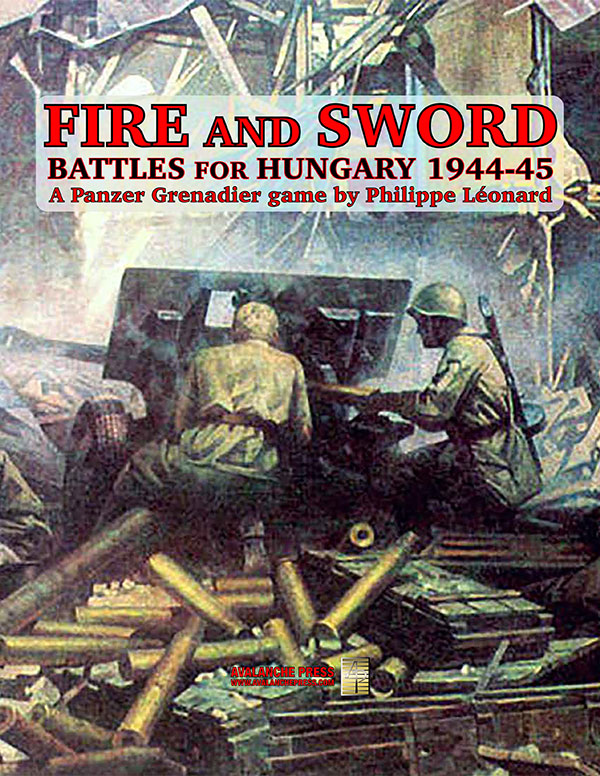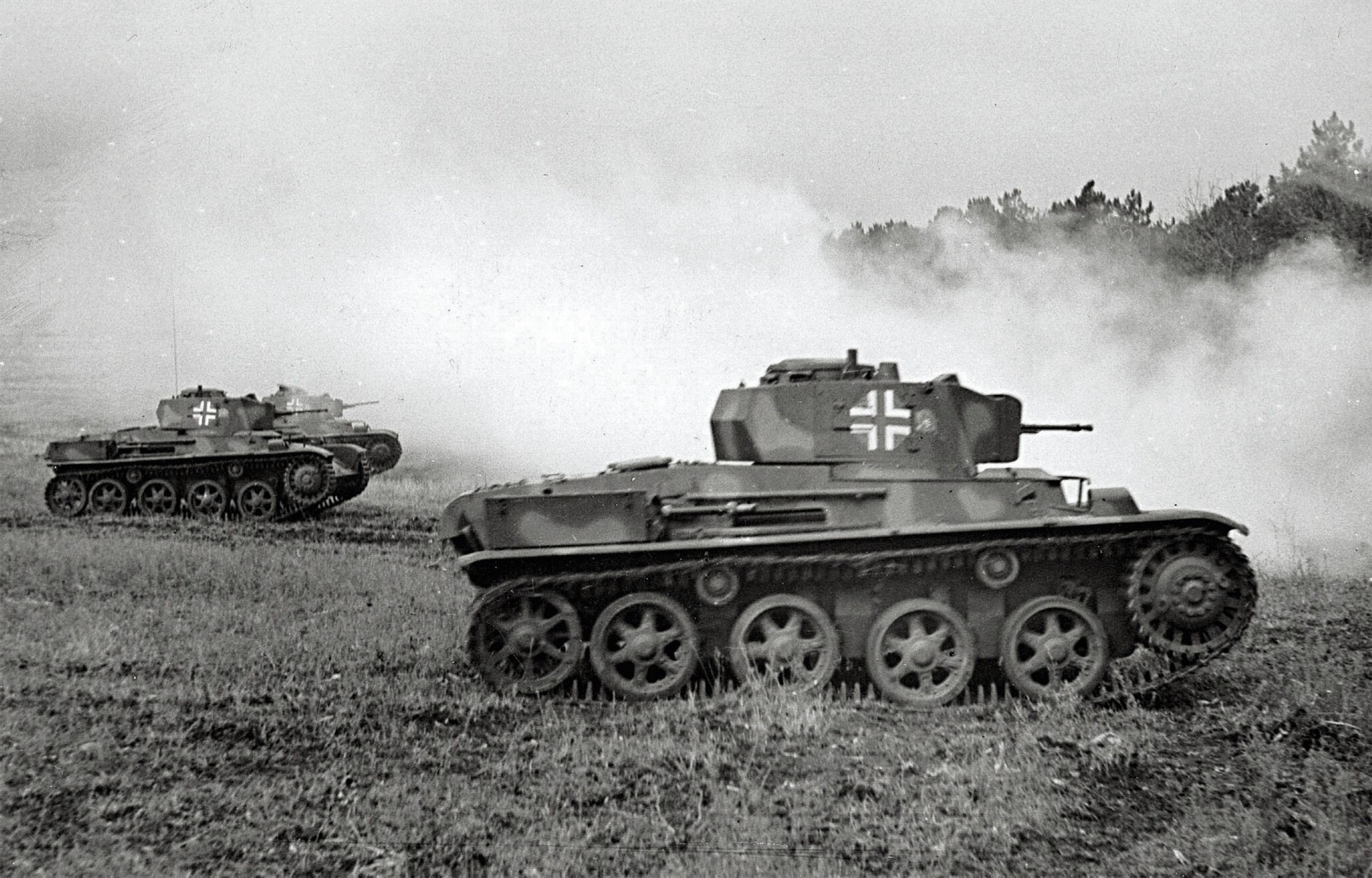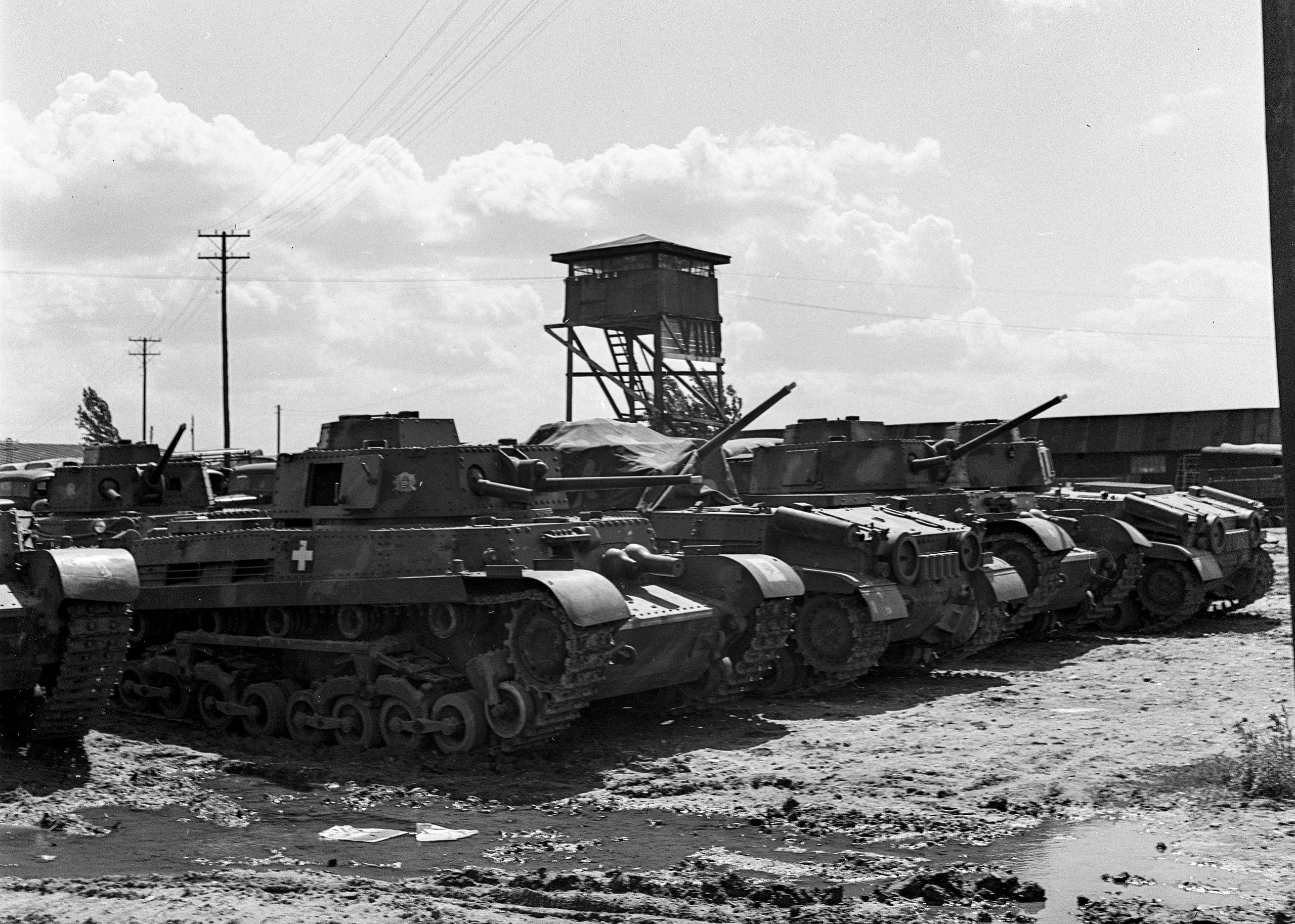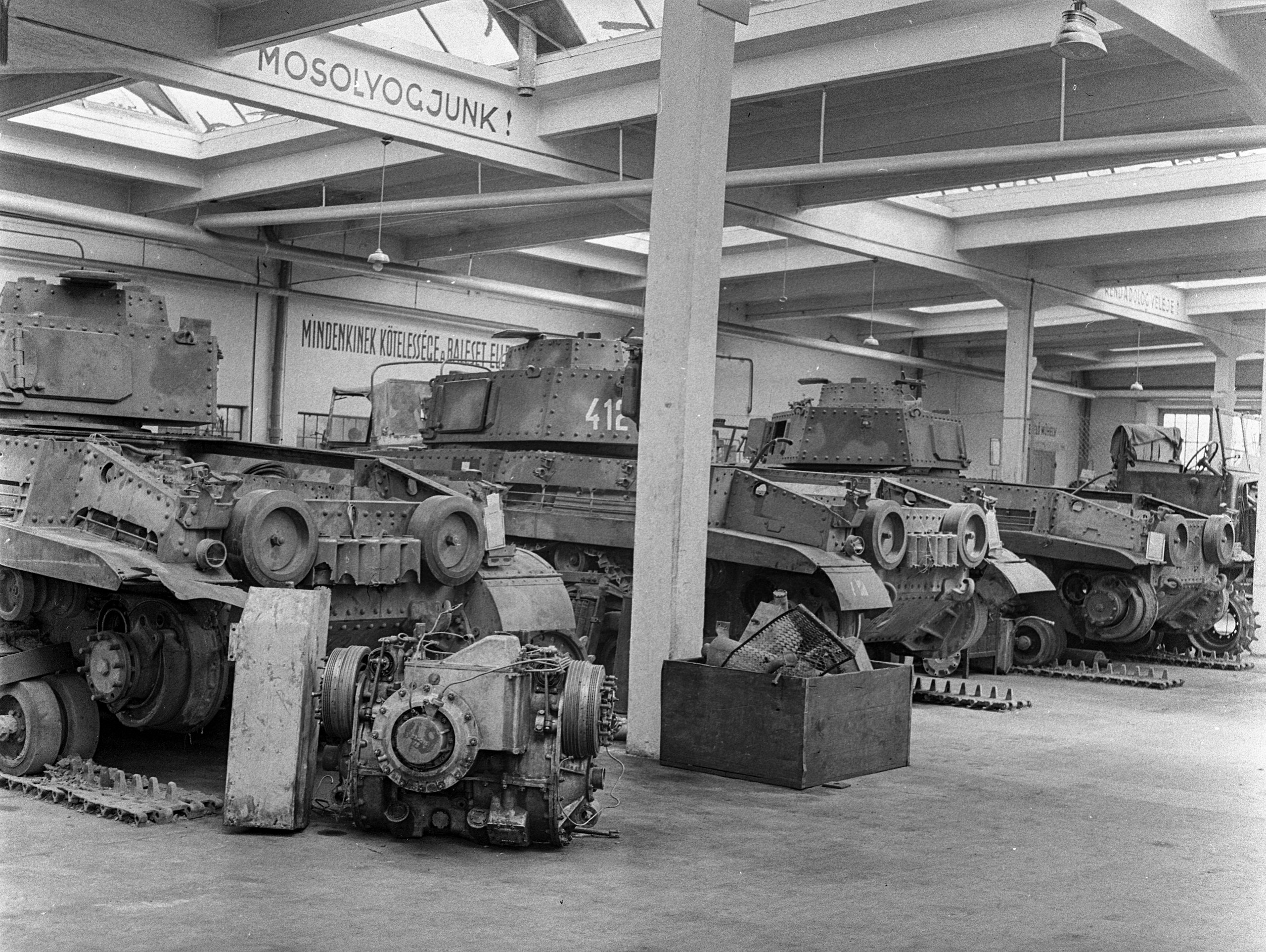Fire & Sword:
Hungarian Armor, Part One
by Mike Bennighof, Ph.D.
October 2024
 Following defeat in the First World War, the truncated Kingdom of Hungary lay under severe restrictions on its military. The 1920 Treaty of Trianon sheared away 71 percent of the pre-war Kingdom of Hungary’s territory and 58 percent of its population. It also limited the Hungarian army to 35,000 men, with no armored vehicles, heavy artillery, or aircraft. Following defeat in the First World War, the truncated Kingdom of Hungary lay under severe restrictions on its military. The 1920 Treaty of Trianon sheared away 71 percent of the pre-war Kingdom of Hungary’s territory and 58 percent of its population. It also limited the Hungarian army to 35,000 men, with no armored vehicles, heavy artillery, or aircraft.
By the late 1920’s, the Hungarian army had found a loophole; the treaty did not stop the Hungarian national police from acquiring armored vehicles. They picked up a few armored cars, some aged surplus Italian Fiat 3000 light tanks (licensed copies of the French FT17), and converted some trucks with lightweight armor and machine guns.
In 1934, Italy’s Ansaldo firm agreed to sell their CV33 tankettes to Hungary, soon followed by the improved CV35 model. Hungary received 152 of the tiny, rather useless machines, but they did provide a mechanized component to the Hungarian mobile brigades.
All of that changed in 1937, when Hungary formally threw off the Trianon restrictions. Hungary would both buy modern tanks abroad, and manufacture them at home, without paying attention to the peace treaty. That was far easier said than done. All nations capable of producing modern tanks wanted them for their own armed forces, or like Czechoslovakia were hostile to Hungary (thanks to Hungarian claims on Slovakia) with only a few exceptions.
The Light Tank
 Landsverk, the Swedish manufacturer, sold the Hungarians a sample of their L60 light tank in 1937, and a license to manufacture them in 1938. The state-owned MÁVAG Works, a railway locomotive manufacturer, and the private Ganz Works turned out 202 of them, under the name Toldi, between 1938 and 1942, splitting the contracts between the factories. Landsverk, the Swedish manufacturer, sold the Hungarians a sample of their L60 light tank in 1937, and a license to manufacture them in 1938. The state-owned MÁVAG Works, a railway locomotive manufacturer, and the private Ganz Works turned out 202 of them, under the name Toldi, between 1938 and 1942, splitting the contracts between the factories.
The first versions (Toldi I) carried a Soluthurn 20mm anti-tank rifle, one machine gun and a crew of three. The first versions of the L60 (including the sample) carried a Madsden 20mm autocannon, and the tank’s turret had been designed for that weapon. The Hungarians had to modify it slightly to accommodate the Soluthurn gun, but it could not carry the much larger (37mm or 40mm) gun the Honvéd’s generals wanted without a complete turret re-design, which would greatly delay delivery. And so the Toldi carried a gun that its owners already knew to be inadequate (the Swedes realized the same thing, and made the change to a 37mm gun before the first production model arrived).

Toldi I tanks in action on the Eastern Front.
The Toldi had thin armor (7 to 13mm, about enough to keep out small-arms fire), light weight (8.5 tons) and a relatively good speed (50 kilometers per hour). Early models suffered from poor workmanship, but they deployed with the Honvéd’s two motorized and two cavalry brigades for the September 1940 occupation of Transylvania, the April 1941 invasion of Yugoslavia and the June 1941 invasion of the Soviet Union. They proved vulnerable to every Soviet anti-tank weapon, with their own 20mm gun unable to penetrate all but the lightest enemy armor.
Tanks delivered under the first order were called Toldi I, and the almost-identical vehicles of the second order Toldi II. In 1942, the 80 Toldi tanks in the best condition received a 40mm Hungarian-made gun in a new, larger Hungarian-designed turret (the Hungarians did not license the Swedish turret designed for the same purpose). This became the Toldi IIA, a more useful vehicle than those with the 20mm gun, helped by considerably more armor protection but still no match for any but the oldest Soviet light tanks, by then seen only rarely on the battlefield.

A Toldi II tank and its crew, seen in 1942.
The Toldi II piece in Panzer Grenadier: Fire & Sword represents the Toldi IIA with 40mm gun and improved order. Both Toldi I and Toldi II tanks (20mm, paper armor) will show up in the future, with just one piece for both.
The Heavy Tank
 The Hitler government would not allow German firms to sell production licenses for their tanks, even to Axis members like Hungary. Adolf Hitler did not intend to create economic competitors to his Third Reich; minor allies like Hungary and Romania were to be markets in the post-war order, not producers. Hungary would have to look elsewhere for modern armor. The Hitler government would not allow German firms to sell production licenses for their tanks, even to Axis members like Hungary. Adolf Hitler did not intend to create economic competitors to his Third Reich; minor allies like Hungary and Romania were to be markets in the post-war order, not producers. Hungary would have to look elsewhere for modern armor.
Czech firms had been barred from doing business with the Hungarians, thanks to Hungary’s lust to annex pieces of Czechoslovak territory. That all changed when Germany overran Czechoslovakia, giving the Hungarians a slice and also seizing full control of the well-developed Czech arms industry. The tank-building Skoda combine came under Hermann Göring’s sphere of corruption, with his little brother Albert charged with building the export business. Albert, when not undermining Nazi policies or seducing Czech women, offered the top-line Czech tanks, both those in production and prototypes of new designs, to the Hungarians, Romanians, and Italians.

Turán I gathered for repair work, 1942 or 1943.
The Hungarians chose to license the T-21 prototype, an enlarged development of the successful series of light tanks including the LT35, with more armor and a 47mm main gun. The Hungarians made substantial changes to their version, called the Turán, to use as many Hungarian-designed components as possible (thus reducing their licensing fees). The main gun became a Hungarian 40mm piece (with performance equivalent to the Czech 47mm gun), in a re-designed three-man turret (the Czech version’s turret held two men), with two Hungarian-made machine guns.
Daily Content includes no AI-generated content or third-party ads. We work hard to keep it that way, and that’s a lot of work. You can help us keep things that way with your gift through this link right here.
All of that re-design took 11 months, from purchase of the license in August 1940 to rollout of the first prototype in July 1941. During that time, the mechanized battlefield had completely changed. The Turán would have been a serviceable medium tank in the summer of 1940. A year later, the appearance of new Soviet designs like the T34 and KV-1 rendered it obsolete. Lacking German assistance, the Hungarians had to develop their own methods of rolling thicker armor, and doing so without rare alloying metals like nickel and vanadium. Testing found the engine liable to seize up in the cold and the treads to get stuck in the mud, while the double-clutch transmission made the Turán very hard to drive. Finally, the first production model rolled off the line at Manfred Weiss in June 1942.

Turán tanks under repair, 1942 or 1943. The slogan reads, “Let’s smile!”
The Honvéd ordered 230 units, split between four manufacturers. The tanks went to the two new armored divisions raised in the fall of 1942, but did not see combat until the spring of 1944. By then, the 40mm gun had become thoroughly outdated, and a new version of a short-barreled 75mm gun, the Turán II, had been ordered.
The Turán II had a Hungarian-designed and -manufactured gun, in a re-worked turret, all on the same chassis but with additional armor bolted on. The Honvéd ordered 254 of them, and directed that Turán I tanks under construction be completed as Turán II. In all, 454 Turán tanks of both types had been completed when the Germans occupied Hungary in March 1944 and shut down production of new tanks, only allowing spare parts manufacture to continue.

Completed
Turán II tanks ready for deployment.
The 2nd Armored Division finally took its Turáns into battle in April 1944, deploying both models together. In their first action, the Hungarians lost about 30 of them, destroying two Soviet T34/85 tanks in exchange. They continued to deploy them in the battles across Hungary; against the modern Soviet armor they had little chance and suffered heavy losses.
The Turán piece in Panzer Grenadier: Fire & Sword represents the Turán II with its short 75mm gun and improved armor. It’s not a very good tank, but it is a tank, and sometimes that’s a useful thing to have.
You can order Fire and Sword right here.
 Sword of Fire Sword of Fire
Fire & Sword
Stalin’s Tanks
Eastern Front Artillery
Retail Price: $145.96
Package Price: $120.00
Gold Club Price: $96.00
Take up the Sword of Fire Here.
Sign up for our newsletter right here. Your info will never be sold or transferred; we'll just use it to update you on new games and new offers.
Mike Bennighof is president of Avalanche Press and holds a doctorate in history from Emory University. A Fulbright Scholar and NASA Journalist in Space finalist, he has published an unknowable number of books, games and articles on historical subjects.
He lives in Birmingham, Alabama with his wife and three children; he misses his dog, Leopold.
Daily Content includes no AI-generated content or third-party ads. We work hard to keep it that way, and that’s a lot of work. You can help us keep things that way with your gift through this link right here.
|
